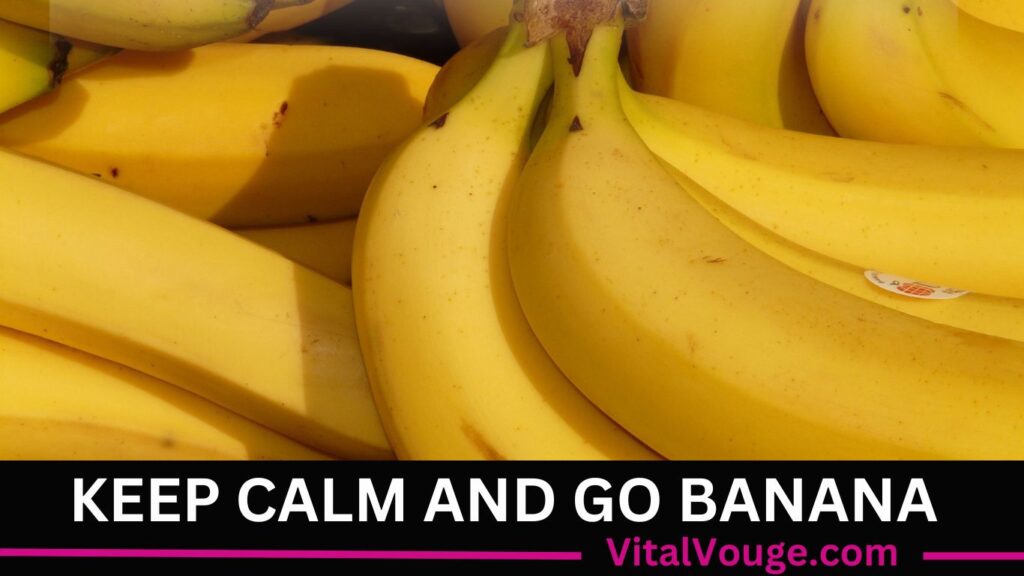
KEEP CALM AND GO BANANAS
Bananas are a delicious and nutritious fruit, and they enjoy worldwide popularity. They belong to the Musaceae family of plants. Bananas rank as the fifth most cultivated fruit in world trade across nearly 130 countries, primarily in the tropical and subtropical regions of Southeast Asia. Bananas are a healthy source of potassium, fibre, vitamin C, vitamin B6, and several antioxidants and phytonutrients. There are many different sizes and types of bananas, typically ranging in colour from green to yellow; sometimes yellow turns black, although some varieties are red.
TYPES OF BANANA
There are over 1,000 varieties of bananas grown in 135 countries worldwide. We can categorise bananas into two groups: cooking bananas and dessert bananas.
1. CAVENDISH BANANA
The Cavendish bananas are easily available in American grocery stores. It has a mild sweet taste and a smooth, creamy feel. It ripens in stages from green to yellow, often developing brown spots. Cavendish bananas, grown widely in Central America, are vital to the economy.
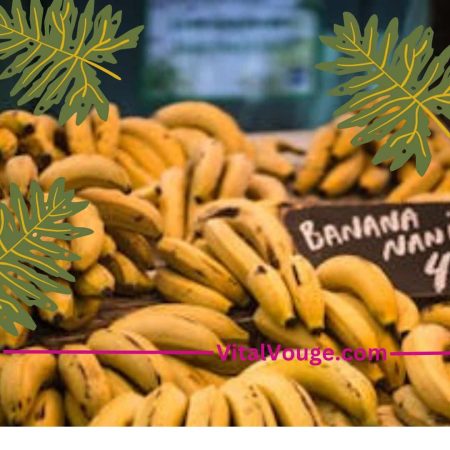
2. PISANG RAJA
The name comes from Malaysia and India. In Malai language, banana is called Pisang, and in Indian language, Raja means king. Its English name is Latundan banana. These bananas are very popular in Indonesia, Malaysia, India, and Pakistan. They are in yellow and orange colors. They taste like honey-flavoured flan, with a hint of citrus. These are smaller than cavandish bananas but very delicious and have a creamy, smooth texture.
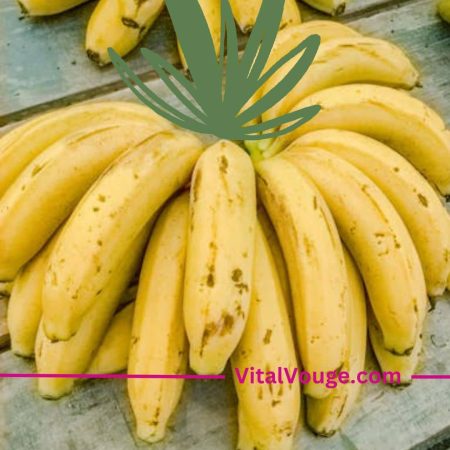
3. LADYFINGER BANANA
Lady Finger bananas are widely available in grocery stores in Australia, Taiwan, and Indonesia. People call them baby bananas or ladyfingers because they are about three inches long. These are smaller and sweeter than Cavendish bananas. They are naturally sweet and have a great taste with a hint of honey and a creamy feel.

4. RED BANANA
Red bananas are very common in Malaysia, Indonesia, and India. They are also known as Red Dacca bananas. Researchers most often find them in the region of Southeast Asia. They have reddish-purple skin and light pink flesh. People have used them for religious festivals because of their unique red color. They taste super delicious. They are soft and sweet, and slightly tastes like strawberry or pear. They are high in vitamin C and B6, to increase blood cells, make antibodies, and boost your immunity system.
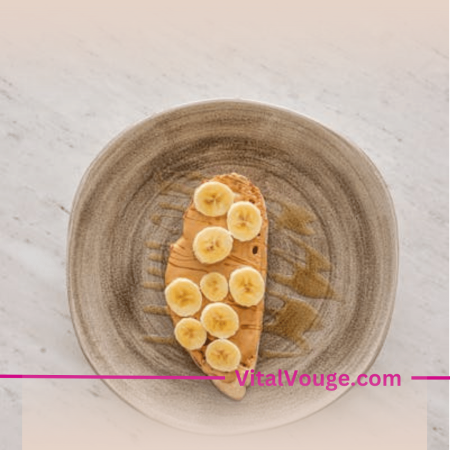
5. BLUE JAVA BANANA
Farmers grow Blue Java bananas in warm, sunny, and humid regions like Fiji. The Philippines, and South Asia. They are often called ice cream bananas and have a sweet vanilla flavour and a creamy texture. They have a unique blue peel and white flesh. You can eat them fresh and cook. These bananas are quite hardy. They can grow in colder weather and can resist cold and humid weather. They can grow in low temperatures as low as -7 degrees Celsius.
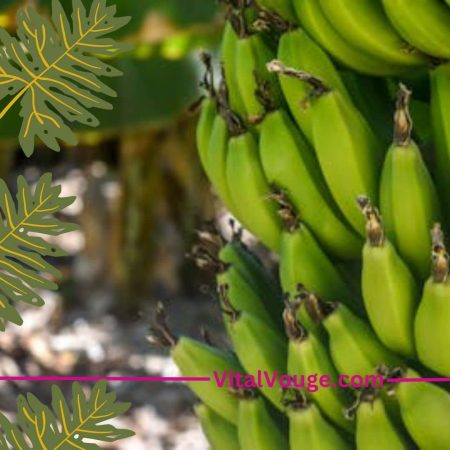
6. MANZANO BANANA
Manzano bananas are sweeter than Cavendish bananas and taste like a mix of apple and strawberry. It is cultivated in South America, Mexico, and the Caribbean. Manzano bananas have yellow skin that turns dark yellow and further black when they are fully ripe, and they are short and thick in size.
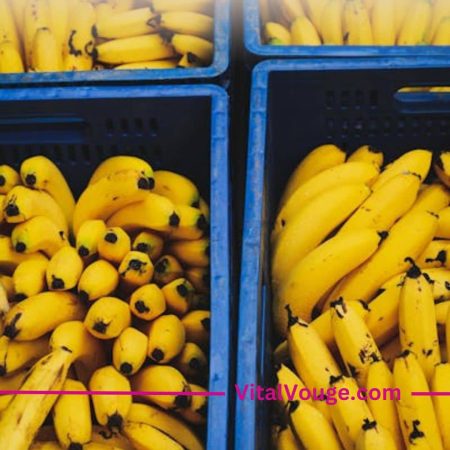
7. GOLDFINGER BANANA
The Goldfinger banana was first developed in Honduras. Scientists made it more resistant to pests. You can cook it while it is green, and you can eat it raw when it is completely ripe. The Cavendish banana resembles it. Scientists want to replace the more disease-prone variety with it.

8. BARANGAN BANANA
Barangan bananas are from Mylasia. They are famous for their delicious taste. They are a sweet type of banana with a mild flavour with a touch of orange. They are yellow with small dots on their skin and are seedless. Barangan banana enriched with vitamin B, vitamin C, fibre, iron, and other nutrients. The majority enjoy them as a dessert in many tropical regions.
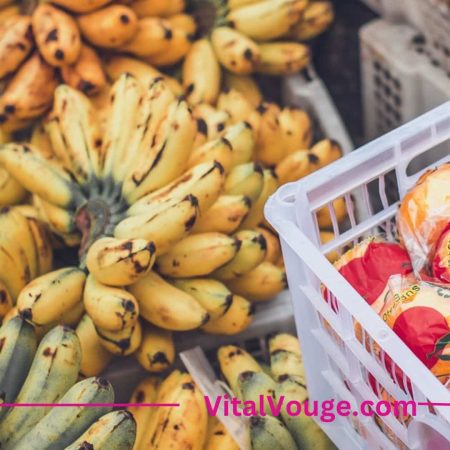
NUTRITION FACTS
A medium-sized banana (100 grams) has these nutrition facts: calories 89, carbs 23 g, fibre 2.6 g, sugar 12 g, protein 1.1 g, fat 0.3 g, potassium 358 mg, vitamin C 8.7 mg, and vitamin B6 0.4 mg.
CARBOHYDRATES
Bananas are an excellent source of carbohydrates. One hundred grams of medium bananas have about 24 grams of carbs. Unripe bananas have these carbs, while ripe bananas have more sugars. When bananas are green, they can have as much as 80% starch. As they ripen, this starch turns into sugars, and when they reach complete ripeness, the starch is less than 1%. The main sugars in ripe bananas are sucrose, fructose, and glucose. They contain 16% sugar in fresh form. Bananas also have a low glycaemic index (GI) of 42–58, which varies depending on how ripe they are. The GI demonstrates how rapidly carbohydrates from food can raise your blood sugar. The high amounts of resistant starch and fibre in bananas help keep their GI low.
FIBRE
Unripe bananas contain a lot of resistant starch, which your body does not digest. Instead, it goes into your large intestine, where bacteria turn it into butyrate, a fatty acid that can help your gut health. Bananas also have other types of fibre, like pectin. Some pectin is water-soluble, and as bananas ripen, the amount of this pectin increases, making them softer. Both pectin and resistant starch help keep your blood sugar from rising too quickly after you eat.
VITAMINS AND MINERALS
Banana are a great source of several vitamins and minerals, especially potassium, vitamin B6, and vitamin C.
Potassium: Bananas are rich in potassium, which can help lower blood pressure, regulate the heartbeat, and help our nerves function and contract muscles. Potassium moves nutrients into the cell and moves the waste elements out of the cell. A diet rich in potassium subsides the harmful effects of sodium on blood pressure.
• Vitamin B6: They are also high in vitamin B6. A medium-sized banana can have up to 34% of the daily need for one person.
• Vitamin C: Bananas are a good source of vitamin C. A 100-gram medium-sized banana may have 8.7 mg of this vitamin. It works as an antioxidant. Fortunately, we can get this antioxidant from food. Antioxidants rush out the free radicals in our bodies.
DOPAMINE
Dopamine is a brain chemical called the happy hormone. It is a strong antioxidant that can dissolve in water, like vitamin C. The dopamine found in bananas crosses the blood-brain barrier to influence mood. Instead, it functions as an antioxidant.
CATECHIN
Catechin is a substance found in bananas. It protects the body cells from damage caused by the free radicals. Catechin is a most-found antioxidant in bananas. These compounds are associated with various health benefits, such as lowering the risk of heart disease.
HEALTH BENEFITS OF BANANAS
Bananas offer several health benefits.
1. HEART HEALTH
Heart disease is the most common cause of premature death worldwide. Bananas are rich in potassium. A mineral that promotes heart health and helps regulate blood pressure and the heartbeat. Potassium also reduces the effects of sodium on the heart. Bananas are high in potassium, which can help prevent dangerous blockages in the arteries caused by hardening and narrowing. It strengthens the heart muscles when they contract. A medium-sized banana provides around 0.4 grams of potassium. Studies show that consuming 1.3–1.4 grams of potassium daily can lower 26% of the risk of heart disease. Bananas contain antioxidant flavonoids, which decrease the risk of heart attacks.
2. DIGESTIVE HEALTH
Unripe, green bananas are high in resistant starch and pectin, both of which are types of dietary fiber. Fibre helps play a role in controlling how easily and quickly you digest carbohydrates. Resistant starch and pectin have prebiotics; they find good bacteria in our gut, and prebiotics feed these good bacteria, which helps with gut health.
3. BONE HEALTH
While bananas are not high in calcium, they can still support strong bones. A 2009 article in the Journal of Physiology and Biochemistry states that bananas are rich in fructooligosaccharides, which are non-digestible carbohydrates. These compounds help promote healthy gut probiotics. They help the body absorb calcium for bones.
4. CANCER
A starch found in bananas can reduce a few types of cancer by more than half. Many foods, like oats, cereals, rice, green beans, peas, and slightly green bananas, contain resistant starch. This starch is typically not much of a help to bowel cancers but can reduce the effects of cancer on the other parts of the body by more than half. It is specifically good for upper gastrointestinal (GI) cancers. A Swedish study shows that women who ate more than 75 servings of fruits or vegetables, including bananas, per month reduced their risk of kidney cancer by 40%. Women who ate four to six bananas a week had their chance of getting kidney cancer reduced by half. Bananas may contribute to kidney cancer prevention because they contain highly antioxidant phenolic compounds.
5. MANGANESE IS GOOD FOR SKIN
One medium-sized banana provides about 13% of our daily manganese requirements. Manganese plays a role in the absorption of calcium in the body, metabolises carbohydrates and fats, and regulates the sugar in the blood. It helps the body make connective tissue, blood, bones, and sex hormones. Carbs help our body produce collagen and protect our skin and other cells from free radical damage.
6. POTASSIUM IS GOOD FOR LOWERING BLOOD PRESSURE
A medium-sized banana contains about 320-400 mg of potassium, which meets 10% of our daily potassium needs. Potassium helps to regulate blood pressure and make our hearts healthy. Bananas are low in sodium. This combination of low sodium and high potassium can help control high blood pressure.
7. GASTROINTESTINAL ISSUES
A medium banana provides 12% to 14% of your daily fibre needs. According to WHO (World Health Organisation), the recommended daily fibre intake is 20–26 gm for males and females. Bananas are rich in a starch called pectin that can form a gel, which helps to treat gut issues like diarrhoea, constipation, and stomach infections. Bananas are a low-acid or alkaline fruit; their consumption is good for gastritis, and they help prevent bloating because of gas in the belly. Pectin is a soluble fibre that facilitates the smooth movement of food through the digestive tract. While insoluble fibre adds bulk and softness to stools, making it easier to have regular bowel movements. Bananas can help you tackle gastrointestinal issues such as constipation, stomach infections, acid reflux, bloated belly, diarrhoea, etc.
8. GIVE YOU ENERGY (NO FATS & CHOLESTEROL)
Bananas contain three natural sugars: 1. Sucrose 2. Fructose 3. Glucose. Bananas provide quick energy to the body and have no cholesterol or fat. This makes bananas an ideal choice for children and athletes; two bananas can provide enough energy for the exertion of 90 minutes of working out. They are a healthy, delicious choice of snacks for every age group, from kids to older adults. Whether for breakfast, a midday snack, or as a pre-workout helping agent.
CONCLUSION
Bananas rank among the most popular fruits consumed worldwide. Bananas are a tasty and flexible food that can help improve your health. They support digestion and heart health and give you energy. They also meet sweet cravings without the extra sugars and additives in many processed snacks. This makes bananas an ideal choice for children and athletes, whether for breakfast, a midday snack, or before and after sports.



